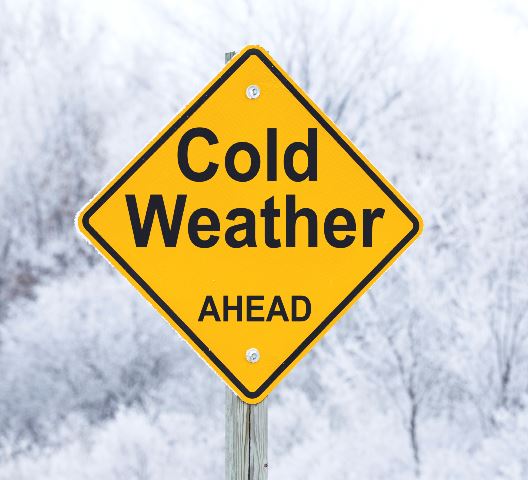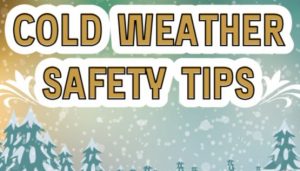
Tips to Protect Workers in Cold Environments
Prolonged exposure to freezing or cold temperatures may cause serious health problems such as trench foot, frostbite and hypothermia. In extreme cases, including cold water immersion, exposure can lead to death. Danger signs include uncontrolled shivering, slurred speech, clumsy movements, fatigue and confused behavior. If these signs are observed, call for emergency help. How to Protect Workers
- Recognize the environmental and workplace conditions that may be dangerous.
- Learn the signs and symptoms of cold-induced illnesses and injuries and what to do to help workers.
- Train workers about cold-induced illnesses and injuries.
- Encourage workers to wear proper clothing for cold, wet and windy conditions, including layers that can be adjusted to changing conditions.
- Be sure workers in extreme conditions take a frequent short break in warm dry shelters to allow their bodies to warm up.
- Try to schedule work for the warmest part of the day.
- Avoid exhaustion or fatigue because energy is needed to keep muscles warm.
- Use the buddy system – work in pairs so that one worker can recognize danger signs.
- Drink warm, sweet beverages (sugar water, sports-type drinks) and avoid drinks with caffeine (coffee, tea, sodas or hot chocolate) or alcohol.
- Eat warm, high-calorie foods such as hot pasta dishes.
- Remember, workers face increased risks when they take certain medications, are in poor physical condition or suffer from illnesses such as diabetes, hypertension or cardiovascular disease.
Some examples of cold-induced illnesses and injuries and what to do should you or someone else become  ill:
ill:
Cold temperatures and increased wind speed (wind chill) cause heat to leave the body more quickly, putting workers at risk of cold stress. Anyone working in the cold may be at risk, e.g., workers in freezers, outdoor agriculture and construction.
Common Types of Cold Stress
Hypothermia
- Normal body temperature (98.6°F) drops to 95°F or less.
- Mild Symptoms: alert but shivering.
- Moderate to Severe Symptoms: shivering stops; confusion; slurred speech; heart rate/breathing slow; loss of consciousness; death.
Frostbite
- Body tissues freeze, e.g., hands and feet. Can occur at temperatures above freezing, due to wind chill. May result in amputation.
- Symptoms: numbness, reddened skin develops gray/white patches, feels firm/hard, and may blister.
Trench Foot (also known as Immersion Foot)
- Non-freezing injury to the foot, caused by lengthy exposure to wet and cold environment. Can occur at air temperature as high as 60°F, if feet are constantly wet.
- Symptoms: redness, swelling, numbness, and blisters.
Risk Factors
- Dressing improperly, wet clothing/skin, and exhaustion.
How to Protect Yourself and Others
- Know the symptoms; monitor yourself and co-workers.
- Drink warm, sweetened fluids (no alcohol).
- Dress properly:
- Layers of loose-fitting, insulating clothes
- Insulated jacket, gloves, and a hat (waterproof, if necessary)
- Insulated and waterproof boots
What to Do When a Worker Suffers from Cold Stress
For Hypothermia:
- Call 911 immediately in an emergency.
- To prevent further heat loss:
- Move the worker to a warm place.
- Change to dry clothes.
- Cover the body (including the head and neck) with blankets, and with something to block the cold (e.g., tarp, garbage bag). Do not cover the face.
- If medical help is more than 30 minutes away:
- Give warm, sweetened drinks if alert (no alcohol).
- Apply heat packs to the armpits, sides of chest, neck, and groin. Call 911 for additional rewarming instructions.
For Frostbite:
- Follow the recommendations “For Hypothermia”.
- Do not rub the frostbitten area.
- Avoid walking on frostbitten feet.
- Do not apply snow/water. Do not break blisters.
- Loosely cover and protect the area from contact.
- Do not try to rewarm the area unless directed by medical personnel.
For Trench (Immersion) Foot:
- Remove wet shoes/socks; air dry (in warm area); keep affected feet elevated and avoid walking. Get medical attention.

